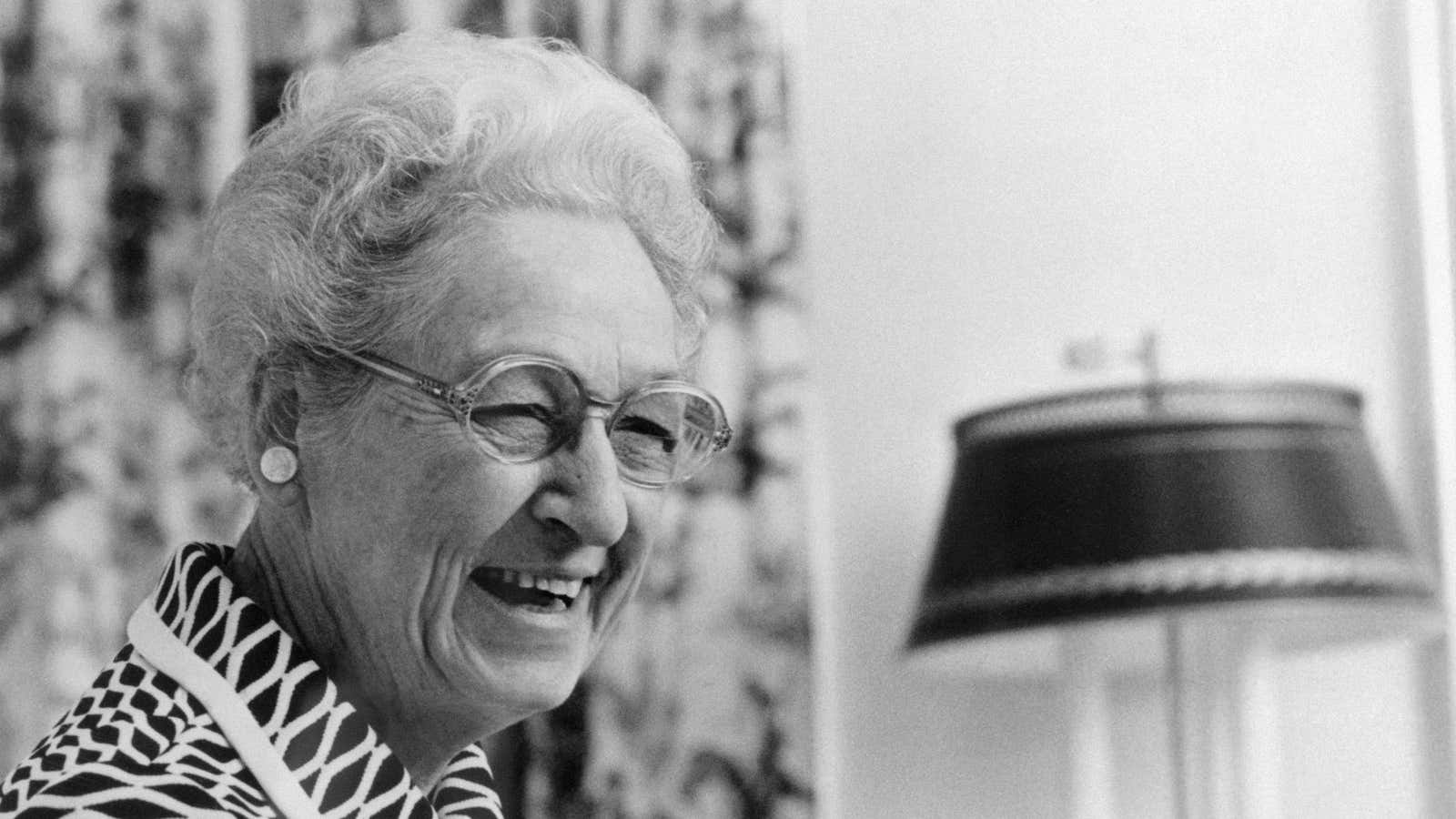Dr. Virginia Apgar did not fear a challenge. An anesthesiologist by training, she climbed the ranks at New York’s Columbia-Presbyterian Hospital in the 1930s and ’40s, when anesthesiology wasn’t recognized as a medical specialty. In 1949, she moved onto neonatal medicine, where she began to dedicate herself to saving the lives of babies.
She realized that, despite the fact that the infant mortality rate was decreasing overall in the US, many newborns were still dying within 24 hours of birth. That’s partly because there was no system in place that enabled doctors to compare one newborn with another and easily spot problems or differences between them. So, in 1952, using both her skills in obstetrical anesthesia and her keen interest in neonatal science, she invented the Apgar score, which measures Appearance, Pulse, Grimace, Activity, and Respiration. Her test has now become the standard method for assessing infant health at one and five minutes after birth.
Today’s Google Doodle (June 7) celebrates what would have been her 109th birthday, and features a cartoon of her conducting her namesake test.
What is the Apgar score?
The Apgar score rates key health metrics like heart rate, respiration, muscle tone, reflex response, and color, on a scale from 0-10. This helps doctors prioritize which newborns need critical medical attention and which do not. By inventing this simple test, Apgar has saved countless new lives and disproportionately contributed to the field of neonatal research and care.
And she was a trailblazer in more ways than one: She was one of four women accepted into Columbia’s medical school in 1929, and, while she was initially interested in pursuing a surgical residency, the chair of surgery at Columbia discouraged her from pursuing that field, and encouraged her to enter anesthesiology instead. She did so and, at 29, she became the sole practicing anesthetist at Columbia until the mid-1940s. And yet, when her division was upgraded to a department, she was passed over for the chair position in favor of a male colleague.
Apgar’s further work on genetics
It wasn’t until she invented the Apgar score that she began to earn the recognition that she deserved, but she didn’t stop there. She left Columbia, got a master’s degree in public health from Johns Hopkins University, and began her work on genetics.
Apgar became a public health advocate and joined what is now the March of Dimes Foundation to lead fundraising and public education efforts about congenital defects. In 1995, she was inducted into the National Women’s Hall of Fame, and in 1973, she co-authored the landmark book Is My Baby All Right?
Apgar died in 1974. A proud and independent woman, she gathered accolades and awards throughout her life and career. She never married. Asked why, she once said, “I haven’t found a man who can cook.”
This reporting is part of a series supported by a grant from the Bernard van Leer Foundation. The author’s views are not necessarily those of the Bernard van Leer Foundation.
